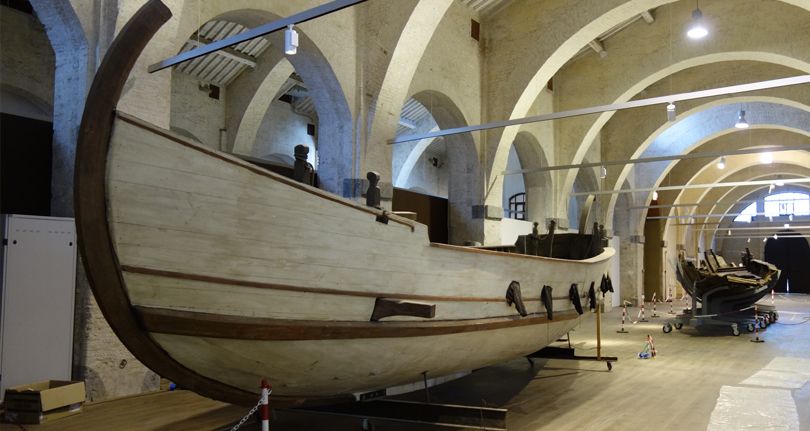The Roman ships of Pisa: The Pompeii of the sea

- On 12 June 2019
- In Monuments and Churches
- Tags: #Pisa daytour, tuscany
The ancient ships of Pisa at the center of a nine-century journey
The leather jacket of a sailor, the skeleton of a man embraced by a dog, a jar of salted anchovies, a wooden box full of coins and medicines.
There is a story spanning nine centuries, made up of businesses and sailors, of routes and shipwrecks, navigations and life on board, remained entangled in the mud, in a network of canals not far from Pisa, sealed by the alluvial deposits over time. A story that will resume at the end of February and will be completely revealed to the public with the opening of the exhibit area of the Pisa Ship Museum, in an area of 4700 square meters inside the Medici Arsenals, built in the second half of the sixteenth century for will of Cosimo I.
Beginning of the excavation
The history of what was dubbed the “Pompeii of the sea” began in 1998, the year in which the excavator traced the outskirts of the ancient walls of the city during work at the Pisa San Rossore railway station. something unexpected. At about three meters of depth emerged the wrecks of thirty Roman ships (11 of which are intact) dating back to a period of time between the 2nd century BC and the 7th century BC, still filled with tableware and kitchenware, wooden shoes, objects of worship that sailors brought with them on dangerous journeys.
The great excavation site inaugurated following the discovery ended in 2016, at the end of a laborious work of archaeologists and restorers who recomposed the original mosaic of a fascinating history.
The museum with more than 800 exhibits
The exhibition inside the Medici Arsenals, which will cover the Roman ships of Pisa, will be different from that of the other museums. The aspect of the story will prevail. In addition to places, activities that revolved around ships will be reconstructed, the daily life on board. It will be a multimedia story that will take advantage of modern technology systems. Visitors will not only see the individual objects, but will come to know the stories, for example that of the sailor and his dog, whose skeletons have been found embraced one another. The completion of the exhibition and the expected opening will allow a certain regularity of visits. Next to the halls that will characterize the entire exhibiting part relating to the ships, there will also be the City Museum, the museum that Pisa still did not have.
The archeological site
During the excavation, the wrecks were freed from the ground according to the method typical of the archaeological excavation, and by fiberglass panels. To ensure the necessary humidity, a spray system was set up on the exhibits, designed for each boat. A new fiberglass shell was superimposed on this to preserve the boat during lifting, transport and planting. The boat, thus encapsulated, was fixed to a metal frame and then lifted and moved to the laboratory for restoration. The archaeological excavation has made it possible to recover several wooden objects.
A wonderful experience through 9 centuries of Pisa
